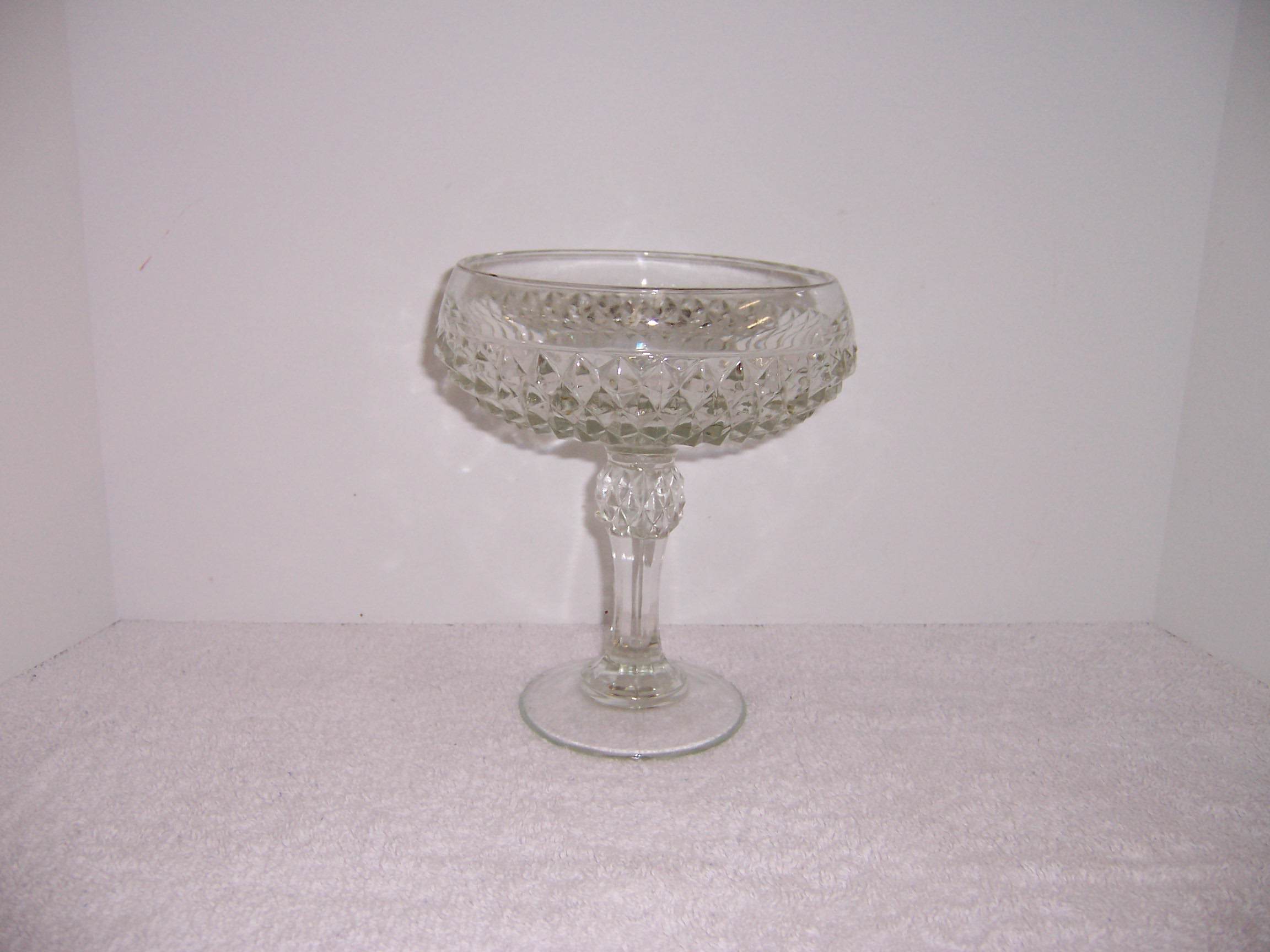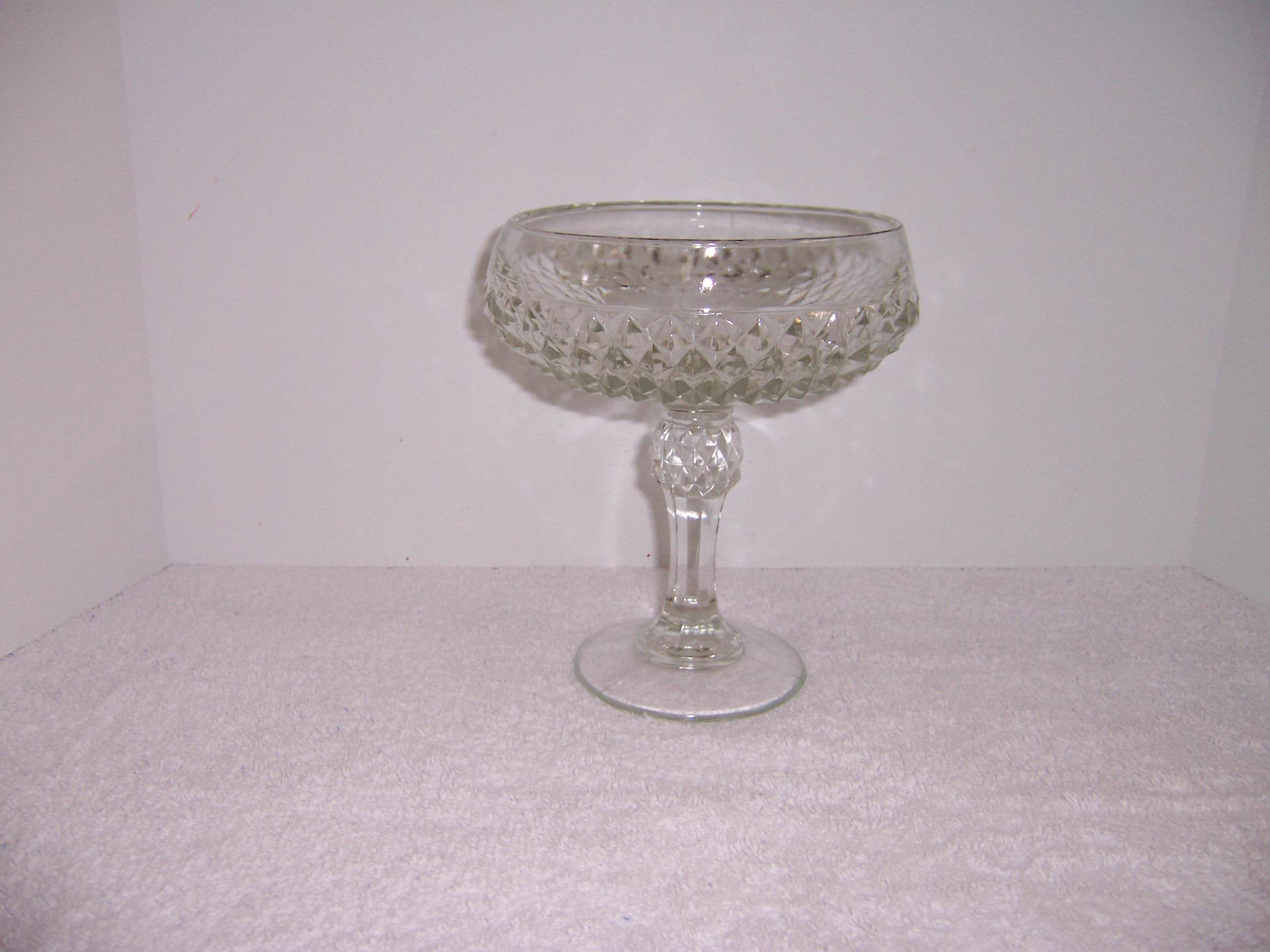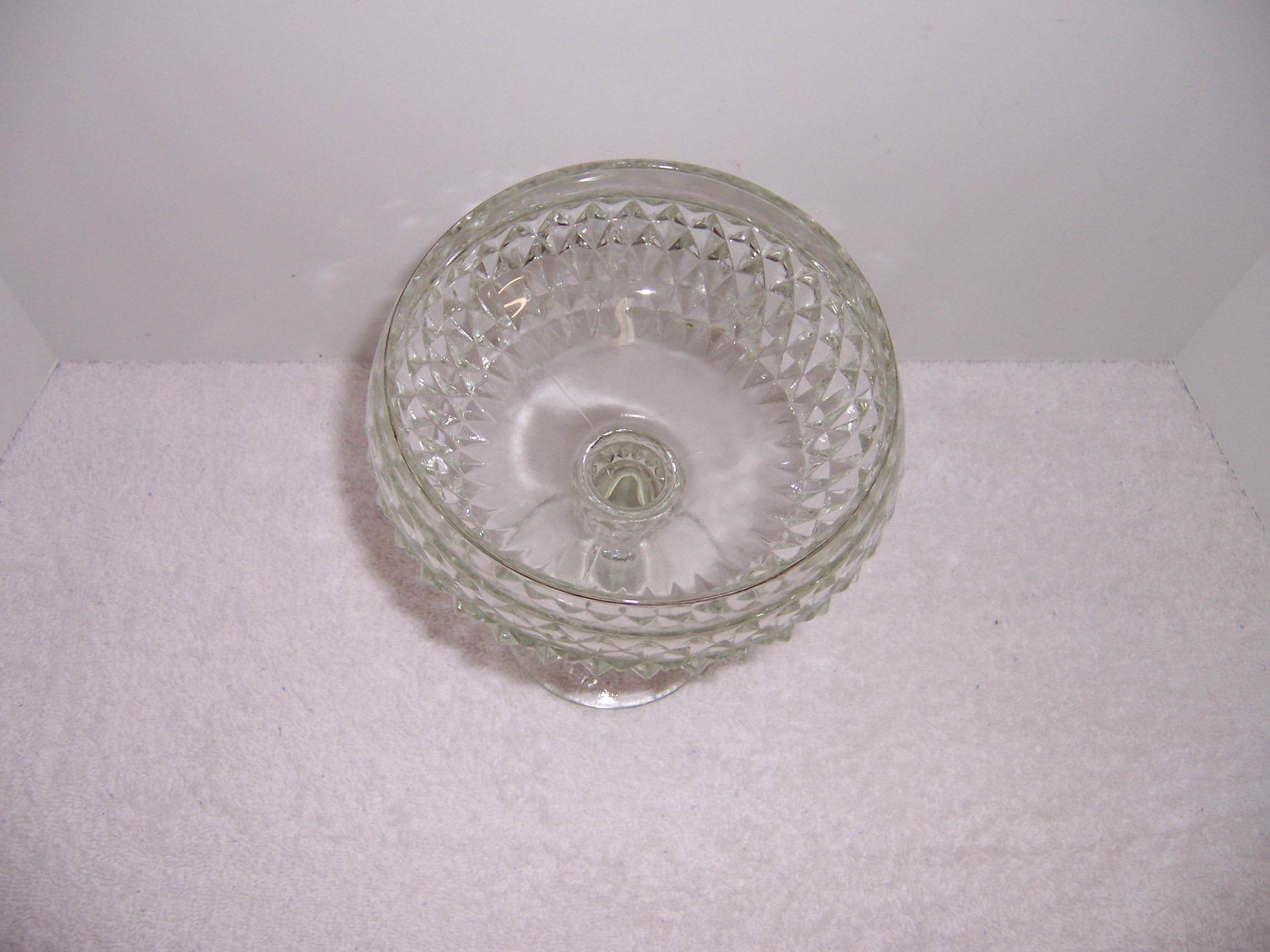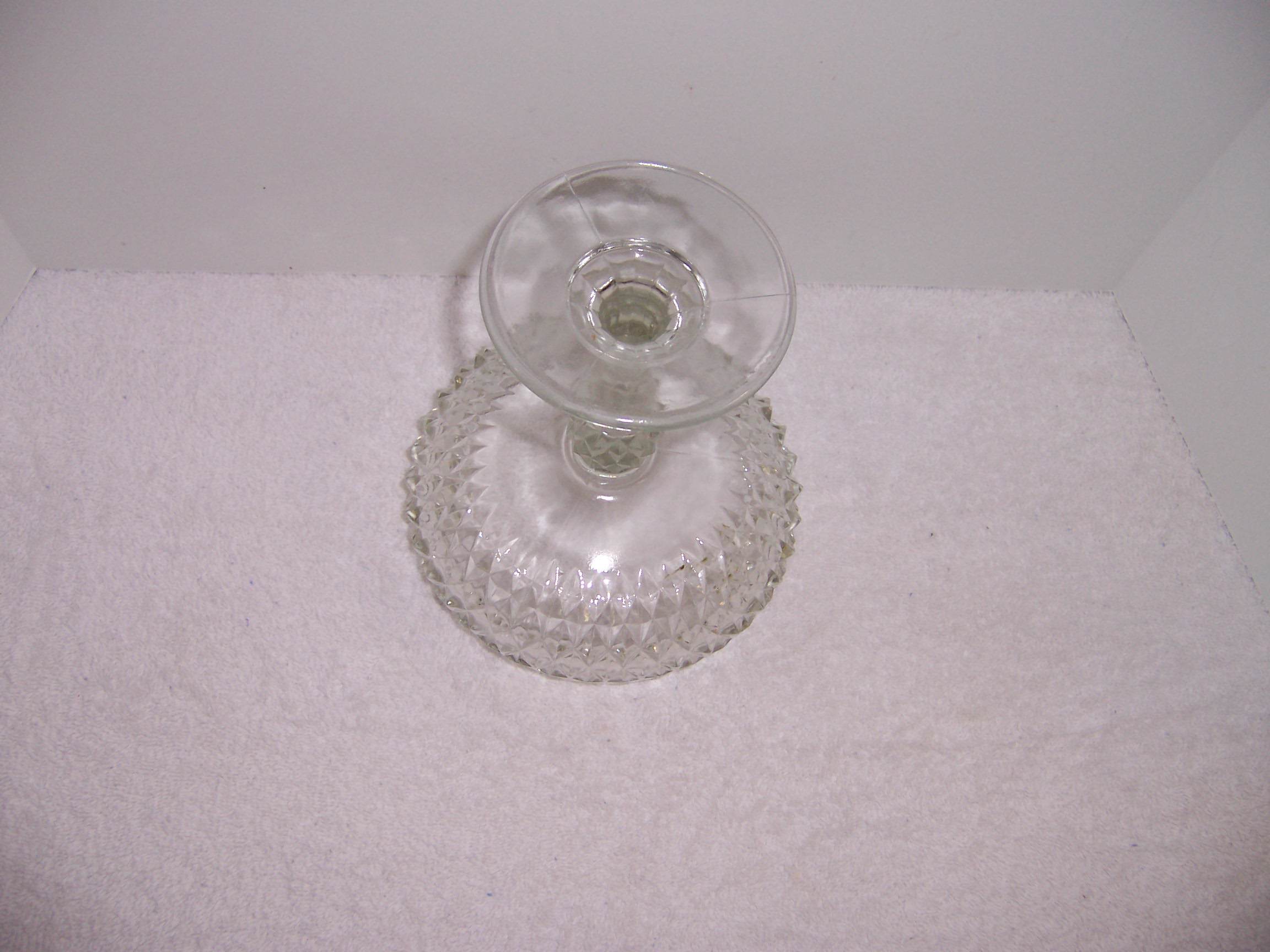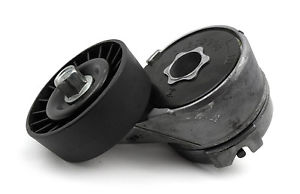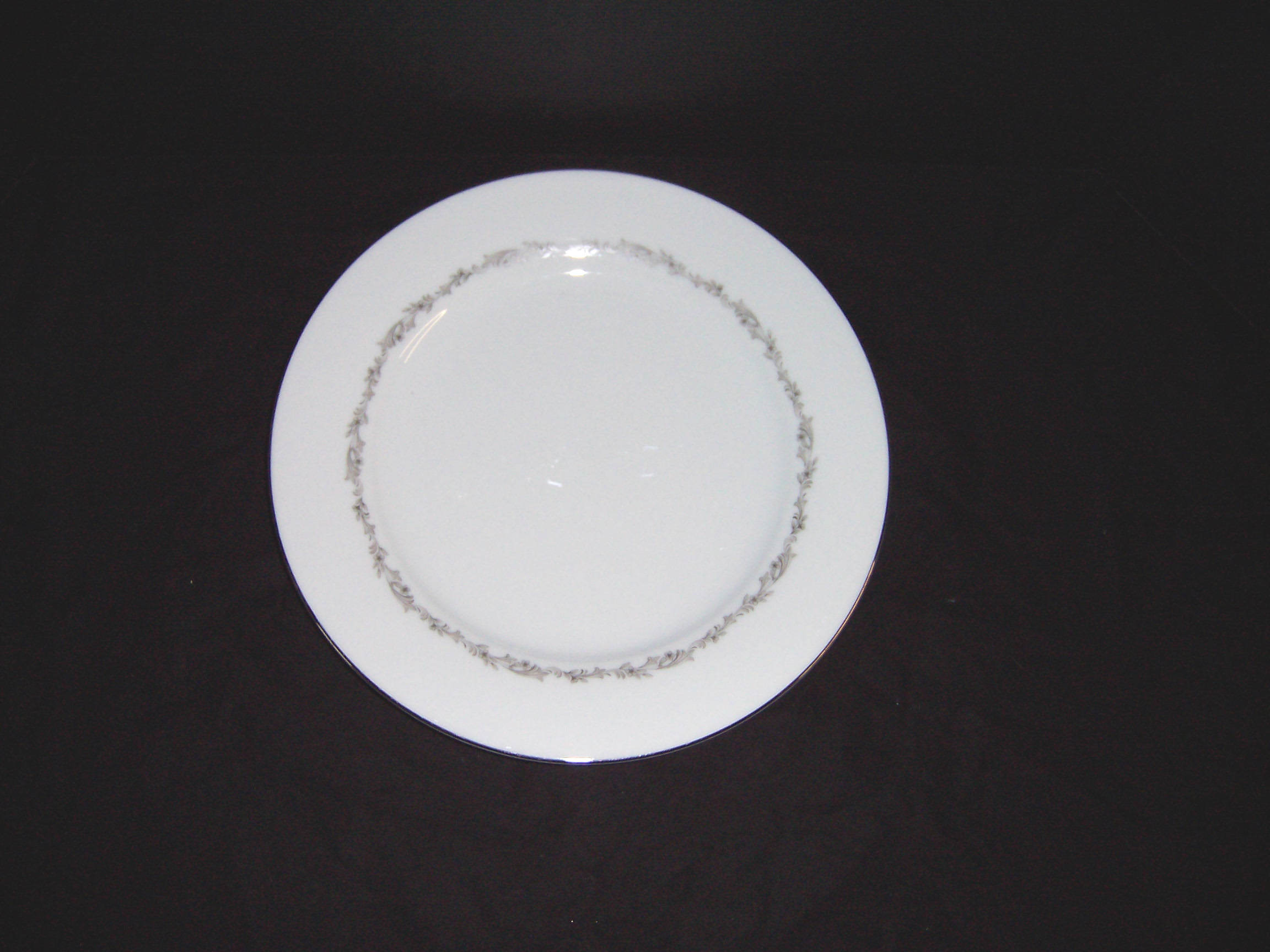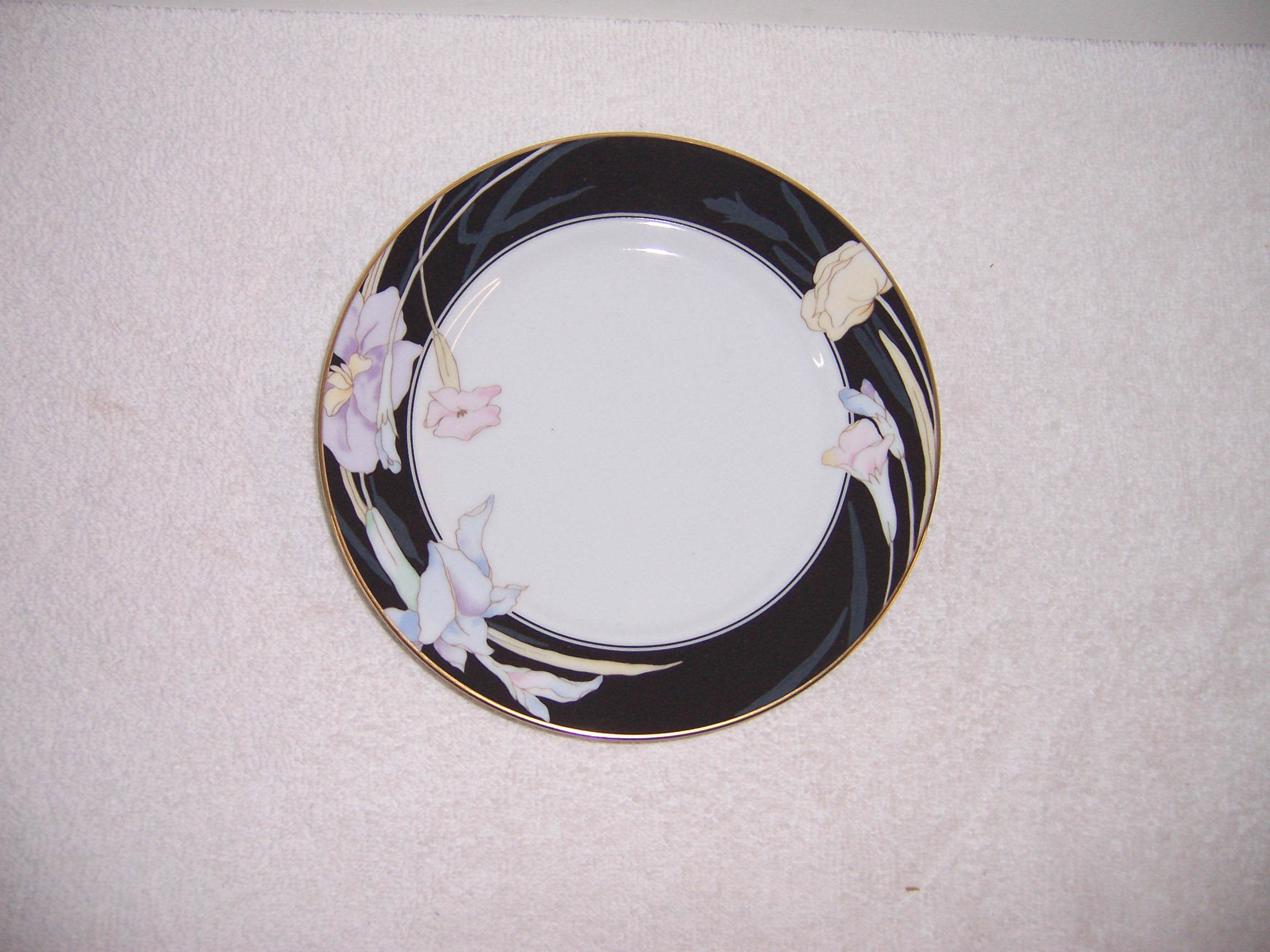Description
Indiana Glass Diamond Point Compote in good condition. It measures 7.25″ high x 6.25″.
Indiana Glass Company
Founded: 1895
Location: Rural Route 2, Box 171, Dunkirk (1895– )
James Beaty and George Brady created the Beaty and Brady Glass Company in 1895.
The partners made glass lamps, chimney tops, vases, and domestic-use glass materials. All
products were handblown. In October 1899 the partners sold their plant to the National Glass
Company, headquartered in Pittsburgh, Pennsylvania.
The National Glass Company sent Frank Merry to head the plant. Merry was a native of
Bowling Green, Ohio. He had attended Oberlin College for two years before joining the Ohio
Flint Glass Company as a bookkeeper in 1895. When twenty-one companies merged to form the
National Glass Company in 1899, Merry was made the assistant treasurer. In January 1903
Merry was transferred to the Dunkirk plant. By 1904 he wanted to operate a company of his
own and leased the local plant of National Glass. Three years later the National Glass Company
went into receivership after a Pittsburgh bank failed, taking the company’s assets with it. Merry
proved instrumental in gaining support and the necessary capital to purchase the Dunkirk plant’s
assets and form the Indiana Glass Company in 1908.
Merry served as president of the new company from 1909 until 1931. By the early 1920s
the company had annual sales of over $1,250,000 and employed 550 people. In 1923 the
company switched from making novelty items, lamps, and service ware to providing the growing
car industry with headlamps, taillights, and industrial glass.
The Indiana Glass Company depended on several raw materials that could be readily
found in or close to northeast central Indiana after 1890. The natural gas boom provided cheap
energy, sand could be shipped from Ottawa, Illinois, Detroit mills supplied the company with
soda ash, and lime deposits could be found in northern Ohio. After 1905 gas no longer flowed as
freely, and the Indiana Glass Company began im
porting Kentucky and West Virginia coal to
create its own natural gas. It took sixty-one years before the local gas company supplied enough
energy for Indiana Glass’s needs.
Charles L. Gaunt assumed the presidency during 1931. He was a son of Dunkirk and had
attended Marion Normal School, later becoming a principal in the Dunkirk school system. In
1909 he tired of pedagogy and took the bookkeeper’s position at Indiana Glass. Seven years
later he was elected by the five shareholders to serve as secretary-treasurer. Like Merry, Gaunt
attended the local Congregational church and was active in Republican politics. He served as a
city councilman during World War I, sat on the school board for four terms, and was elected
mayor in 1921 and 1925.
After the depression the company purchased the Sneath Glass Company of Hartford City
to make sealed beam headlights. The operation failed and the plant in Hartford City closed. By
the early 1940s the company returned to making tableware, marketing its wares to hotels and
restaurants, as well as to homes. In 1940 a customer could order a tall celery dish or a grapefruit
bowl for only 65 cents. A single glass tumbler cost 52 cents while a pair of salt and pepper
shakers with tin lids cost $1.28. Company executives invited customers to browse in nineteen
“sample” shops around the country. Every region of the United States had a shop, but most of
the stores were located in the Midwest. By 1950 production required the use of five continuous
and four-day glass tanks. In 1953 Gaunt’s health was failing, and George and Ada Morton took
over the active management of the plant. Indiana Glass merged with Lancaster Lens Company,
creating the Lancaster Glass Corporation.
In 1956 Dr. R. K. Fox was elected president, retaining his post until 1970. By 1960 the
company operated only three continuous glass tanks and two-day tanks. In 1961 another merger
produced the Lancaster Colony Corporation. Indiana Glass became a subsidiary of the newly
formed corporation. The merger produced many changes. By 1971 the number of sales
representatives had increased to seventy, up from only nine in 1953. As a result of the changes,
business volume increased five times between 1953 and 1971.
Lancaster Colony Corporation appointed J. E. Hoofstetter as general manager in 1970. In
the same year the company launched its “Tiara Exclusives” edition of tableware, special
handcrafted glass pieces. The company claimed to be the only producer of machine-made milk
glass in the country as well as the producer of the most varied colored glass in the United States.
In 1998 the Indiana Glass Company expected sales of more than $100 million and
remained a division of Lancaster Colony Corporation of Columbus, Ohio. The company
employed 700 people and provided for a large percentage of Dunkirk’s total employment
picture. Neil Smith was the plant manager and Kris Ector was the plant engineer. The company
continued to make pressed glassware, tableware, and custom industrial glass.

